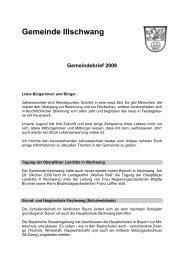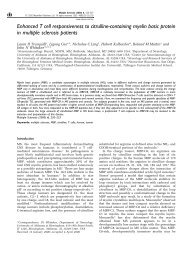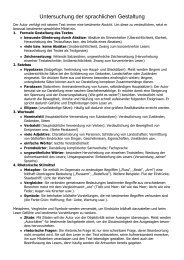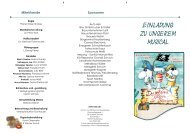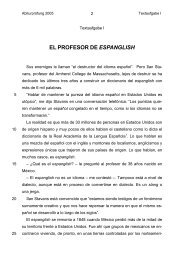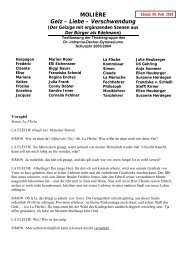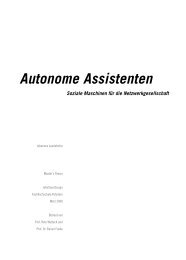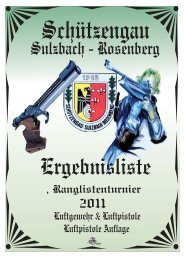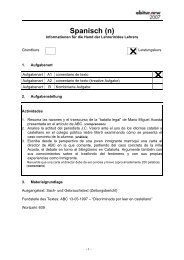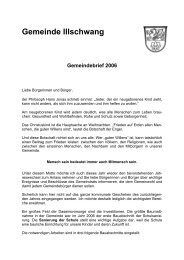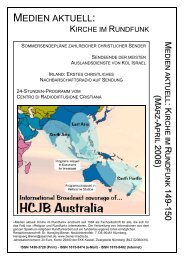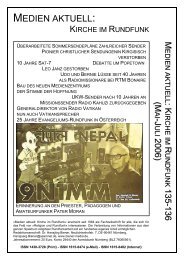Pathfinder Chronicles - Gazetteer - Asamnet
Pathfinder Chronicles - Gazetteer - Asamnet
Pathfinder Chronicles - Gazetteer - Asamnet
Create successful ePaper yourself
Turn your PDF publications into a flip-book with our unique Google optimized e-Paper software.
<strong>Pathfinder</strong> <strong>Chronicles</strong><br />
4<br />
Dwarf Elf Human Half-Orc Half-Elf Gnome Halfling<br />
The following races are found throughout the Inner Sea<br />
region and make excellent choices for player characters.<br />
Sidebars throughout describe the human ethnicities.<br />
Dwarves<br />
Dwarves divide their history into three epochs. The first<br />
covers the original subterranean life of the race’s progenitors,<br />
a dour time of toil and monotonous craft. The second era,<br />
generally considered to be the height of dwarven culture and<br />
inf luence, encompasses the dwarves’ epic struggles against<br />
their orcish and goblinoid enemies, including the final war<br />
and the resulting push to the surface world of Golarion, still<br />
hidden from light in the grasp of the Age of Darkness. The<br />
third era began near the end of the human Age of Anguish,<br />
when the cloak of shadow and ill tidings from the fall of<br />
the Starstone finally passed for good, and the glory of the<br />
dwarves soon passed with it.<br />
The mountain ranges and primeval forests of Avistan<br />
bear witness to the glory of the ancient dwarves in the<br />
form of crumbling abandoned citadels and moss-choked<br />
eroded statuary. The dwarves today are too few in number<br />
to populate all of their old holdings, and while they might<br />
have reclaimed some of these places, other creatures have<br />
moved in and show no signs of leaving without a struggle.<br />
Characters<br />
Dwarves today are most common in the northeastern<br />
section of the Five Kings Mountains, with a Gathering<br />
Council meeting at Highhelm roughly every 200 years to<br />
discuss affairs of import to dwarfkind. Over the centuries,<br />
these gatherings have become more contentious and<br />
diverse, as dwarves have grown increasingly isolated from<br />
one another. The rosy-cheeked warrior-skalds of Kalsgaard<br />
in the Lands of the Linnorm Kings and the squat, hairless<br />
contemplatives of Osirion’s Ouat caste might share blood,<br />
but their cultures are strikingly different. In this era, what<br />
it means to be a dwarf remains more f luid than ever before,<br />
and the whitebeards of the oldest dwarven halls know this<br />
disparity as a sign for what it is—the impending extinction<br />
of dwarf society.<br />
Dwarves stand about a foot shorter than humans, on average,<br />
and are stockier even than a burly half -orc. Incredibly dense<br />
creatures, most dwarves are about 100 pounds heavier than<br />
they appear due to their strong skeletons and tightly packed<br />
musculature. Most dwarves wear their hair long, with men<br />
nearly always favoring long beards. Traditionalists festoon<br />
their beards with elaborate braids, small battle trophies, or<br />
beads commemorating important events in their lives, and<br />
the shaving of a beard is considered a deliberate departure<br />
from time-honored dwarf traditions.



